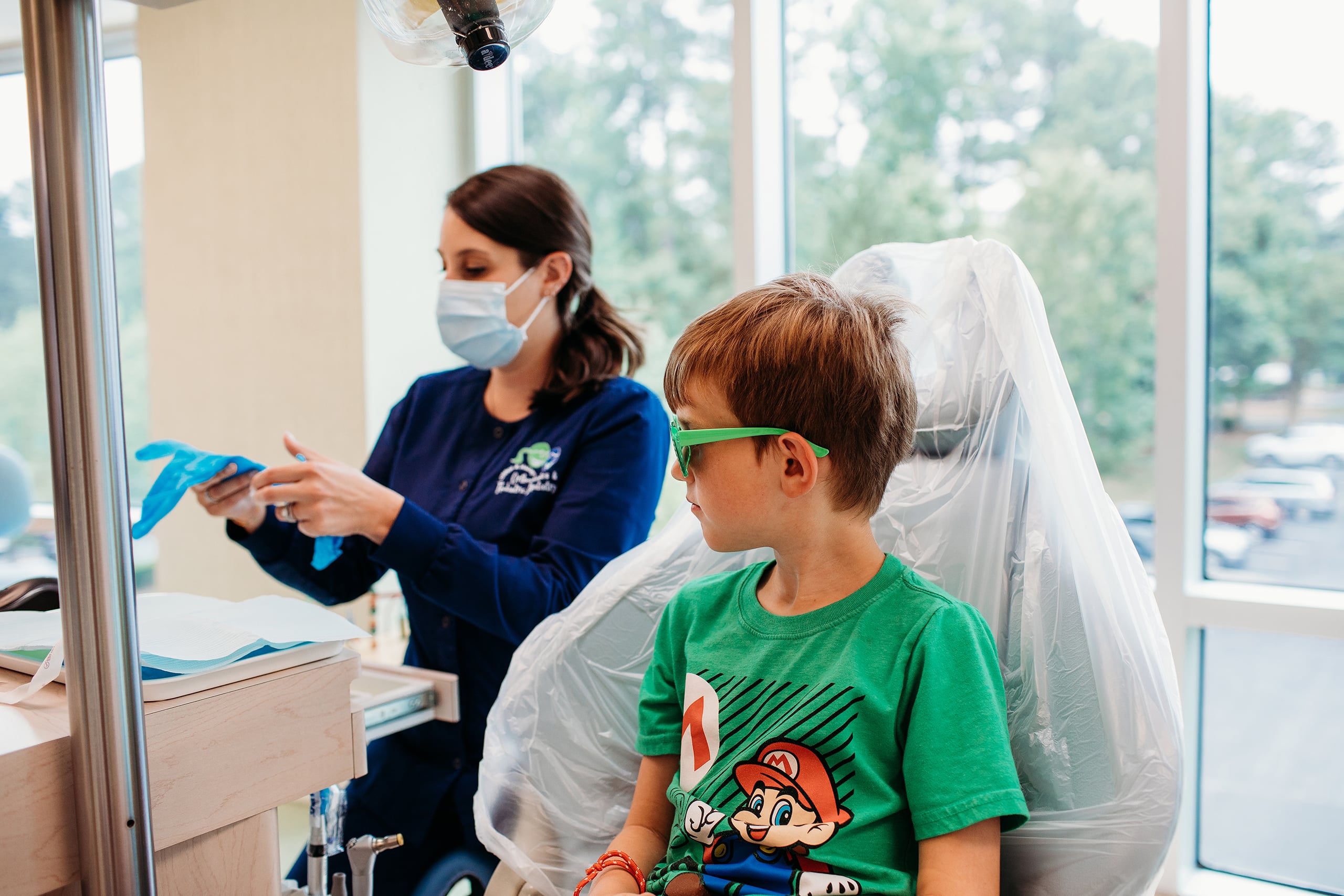Dental Sealants
Children’s teeth are more susceptible to decay because they have thinner tooth enamel and are still learning proper brushing techniques. This is where dental sealants come in! This page will explain what sealants do and why they are important.
To schedule dental sealants for your child, contact Clifton & Mauney Orthodontics & Pediatric Dentistry for an appointment today. Call 919.933.1007 or connect with us online.!

What Are Dental Sealants?
Dental sealants were first introduced in the 1960s and have become an important preventive dentistry tool. They are a thin, protective coatings that are applied to the surface of the teeth to protect them from cavity-causing bacteria and decay. They fill in the deep grooves and pits of the back teeth, making it difficult for plaque and food particles to get trapped and cause decay. This is especially important for children who may have difficulty properly cleaning their back teeth.
Sealants act as a protective shield, preventing bacteria and acids from reaching the surface of the teeth. They also make it easier to clean the teeth by smoothing out any rough areas on the surface.
What Happens During a Dental Sealant Procedure?
Sealants are a highly effective way to prevent cavities, especially in hard-to-reach areas of the back teeth. The cost of dental sealants is usually much less than the cost of treating a cavity or other oral health issues. Therefore, it can be a cost-effective investment in your long-term dental health.
The entire dental sealant procedure typically takes only a few minutes per tooth and is painless. The process involves only seven steps.
Step 1: Cleaning and Preparation
Before the sealant can be applied, the dentist will thoroughly clean the teeth to remove any food particles or plaque. This is important as it ensures that the sealant adheres properly to the tooth surface.
Step 2: Tooth Isolation
Once the teeth are clean, they will be isolated with a isodry or cotton rolls to keep them dry. This is important as any moisture can affect the bonding of the sealant.
Step 3: Acid Etching
Next, an acidic solution will be applied to the teeth to create a rough surface for the sealant to bond to. The dentist will then rinse and dry the teeth.
Step 4: Sealant Application
Step 5: Curing
Step 6: Checking and Adjustments
Step 7: Final Rinse
Sealants can last for several years with proper oral hygiene and regular dental check-ups. In some cases, sealants may need to be reapplied if they become damaged or worn down over time. However, this is not common.
Contact Clifton & Mauney Orthodontics & Pediatric Dentistry for Happy and Healthy Smiles
At Clifton & Mauney Orthodontics & Pediatric Dentistry, we are committed to providing happy and healthy smiles for our patients. We offer a wide range of orthodontic and pediatric dentistry services. Call 919.933.1007 or fill out our online contact form for more information or to schedule an appointment today.
